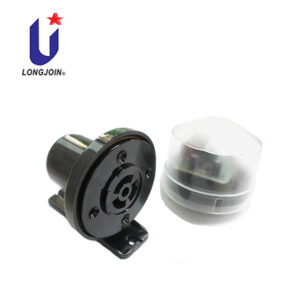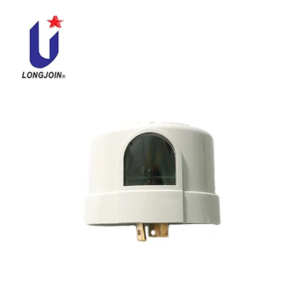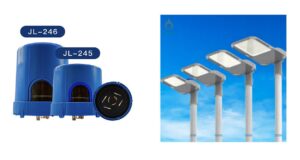The Rise and Challenges of Zhaga Standard in the U.S. Lighting Market
Introduce
The U.S. outdoor lighting market is evolving rapidly. Currently, the NEMA standard dominates the scene. It is well-established and widely accepted in outdoor and street lighting applications. However, the Zhaga standard is emerging as a strong competitor. It offers new advantages, especially in smart lighting.
Zhaga Standard Overview
Zhaga is a global standard. It focuses on the modular design of lighting components. The aim is to create compatibility across different products. It originated to support smart lighting and IoT integration. Its main benefit is the flexibility it offers to manufacturers.
By using standardized interfaces, companies can easily upgrade or replace components. The Zhaga standard promotes a modular design. This allows lighting systems to be more adaptable. This is particularly beneficial in an era where technology evolves rapidly.

Market Acceptance and Compatibility Challenges
NEMA’s Entrenched Market Position
NEMA has been the go-to standard in the U.S. for many years. Its market position is strong. This makes it difficult for new standards like Zhaga to enter. Many companies have already invested in NEMA-compliant systems. This creates a barrier to adopting new standards.
Initial Hurdles for Zhaga Adoption
Switching to Zhaga means adapting to a new framework. This can be a time-consuming and costly process. Switching standards involves retraining staff and updating technologies
Compatibility Issues with Existing Systems
There are also compatibility issues. Not all existing systems work seamlessly with Zhaga components. This creates an initial hurdle for widespread adoption. However, as more manufacturers see the benefits, this challenge may lessen over time.

Technological Advantages and Smart Lighting Evolution
Zhaga’s Role in Smart Lighting Integration
Zhaga shines when it comes to smart lighting. Its design supports the easy integration of sensors and other smart features. This is important as cities move towards smart lighting solutions. Technologies like wireless communication, photocells, and IoT devices fit well within the Zhaga framework.
Flexibility for Various Applications
Zhaga allows for technological flexibility. Manufacturers can adapt the standard for various applications. From street lights to commercial settings, Zhaga provides options that can cater to different needs. This flexibility is a key factor in its growing appeal.
Benefits for IoT and Sensor Technologies
Furthermore, Zhaga’s modular approach supports the use of advanced sensors. These include motion detectors and light sensors. These sensors can automatically adjust lighting levels based on environmental conditions. This leads to huge energy savings.
Cost and Efficiency Considerations
One of the main advantages of Zhaga is cost efficiency. Standardized interfaces can lead to long-term savings. Manufacturers can avoid the need for custom solutions for each project. This reduces overall production costs.
However, the initial costs of switching to Zhaga can be high. Retrofitting existing systems to meet Zhaga standards is not cheap. The challenge is to balance these initial expenses with the long-term benefits. As more companies make the switch, economies of scale could make Zhaga even more affordable.

Efficiency is another major advantage. By integrating with smart controls, Zhaga systems can optimize energy use. It also increases the lifespan of lighting components. Features like dimming and adaptive lighting are also useful. They change lighting based on traffic patterns or weather conditions. This reduces energy consumption.
Market Competition and Innovation Catalyst
Zhaga as a Driver of Competition
Zhaga is more than just a standard, it’s a catalyst for innovation. By encouraging a standardized approach, Zhaga pushes companies to innovate. It opens up the market to more competition. Manufacturers are driven to create better, more advanced products.
Elevating Industry Standards
This competition can elevate the technical standards across the industry. The result is a more dynamic market with higher-quality offerings. Zhaga’s impact goes beyond individual companies. It’s reshaping the entire industry landscape.

Future Perspectives
The future looks bright for Zhaga in the U.S. market. As smart lighting and IoT technologies continue to grow, the demand for adaptable, standardized solutions will increase. Zhaga is well-positioned to meet this demand.
In the short term, the transition may be slow. But in the long term, Zhaga could become a dominant standard. The key will be continued industry support and investment in innovation. The market is trending towards more connected, efficient systems. Zhaga aligns perfectly with these trends.
Bottom line
Zhaga offers a unique set of strengths. It supports smart lighting, provides cost efficiencies, and fosters competition. However, its rise in the U.S. market faces challenges. NEMA’s entrenched position and initial compatibility issues are barriers.
The transition to Zhaga requires time, effort, and investment. But with industry-wide support, Zhaga has the potential to reshape the market. Manufacturers should consider adopting this standard to stay ahead in the evolving landscape. The future of outdoor lighting depends on using such innovative technologies. The journey may be hard. But, the rewards of embracing such forward-looking standards are promising.
FAQs
What is the Zhaga standard in outdoor lighting?
Zhaga is a global standard. It focuses on modular design and compatibility of lighting components. This supports smart lighting and IoT integration
Why is Zhaga facing challenges in the U.S. market?
Zhaga faces challenges due to the strong market position of the NEMA standard. Initial compatibility issues with existing systems is also a big hurdle.
How does Zhaga benefit smart lighting systems?
Zhaga allows easy integration of smart controls, sensors, and IoT devices. This makes lighting systems more efficient and adaptable to changing conditions.
Reference
https://www.nema.org/standards





